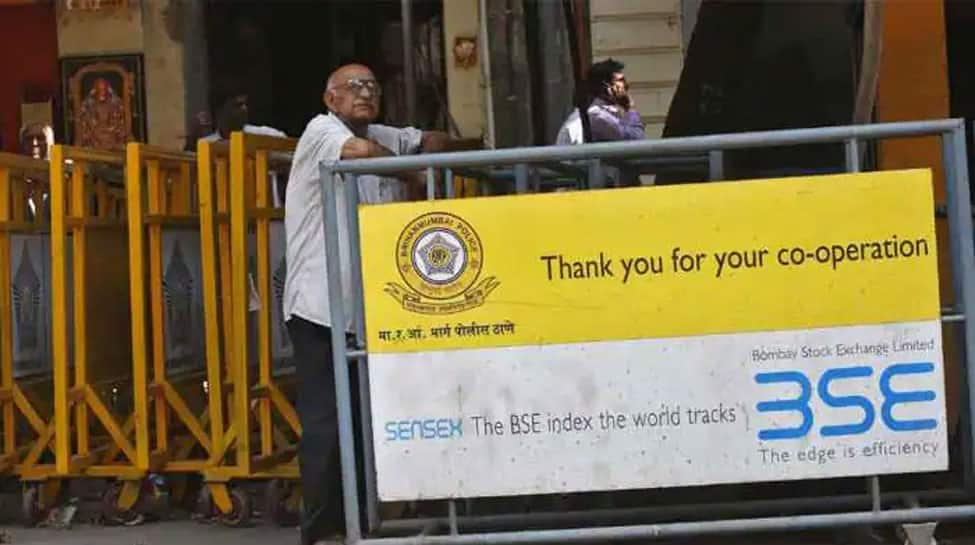 |
|
The Indian stock market experienced a downturn on Friday, concluding a three-day period of gains. The benchmark indices, Sensex and Nifty, both ended significantly lower, reflecting a bearish sentiment that has been developing. The Sensex closed at 76,619.33, a decrease of 423.49 points or 0.55%, while the Nifty settled at 23,203.2, down 108.60 points, or 0.47%. This drop is attributed largely to selling pressure in the IT and financial services sectors. Experts point to the Nifty's failure to surpass a crucial moving average as a key factor contributing to the continued bearish pressure. The prevailing sentiment suggests a potential continuation of this downward trend in the short term, unless the index can breach the 23,400 resistance level. Failure to do so might trigger a broader market correction, with potential drops towards 23,000. This analysis highlights the importance of watching this resistance level closely, as its breach will significantly impact the market's immediate future trajectory. The market's recent performance indicates a concerning trend that extends beyond the headline numbers. This decline, while significant in itself, is only a superficial view of a larger problem.
A closer examination reveals a far more dramatic picture of individual stock performance. The recent peak in September 2024 marked the beginning of a significant decline, with the Nifty 50 falling 11.5 percent, the Midcap index dropping 12 percent, and the Smallcap index experiencing an 11 percent slide. However, the true extent of the market's downturn is masked by these broad index figures. Many individual stocks have experienced considerably more substantial losses, with declines ranging from 25 to 40 percent. This reveals a widespread market pain that isn't fully captured by the aggregate index performance. This discrepancy emphasizes the volatility and risk inherent in individual stock investment strategies, underscoring the need for investors to remain cautious and thoroughly research their investments before committing funds. The disparities between the performance of the indices and the individual stocks within them demonstrate the importance of diversification and risk management strategies.
The sectoral performance also reveals key insights into the market's current state. While the Nifty Midcap 100 and Nifty Smallcap 100 indices showed slight gains, closing at 54,607.65 (up 0.23%) and 17,672.05 (up 0.16%), respectively, the Nifty Bank index experienced a significant downturn, closing at 49,540.6, a drop of 1.50%. This illustrates the vulnerability of the financial sector to changing market sentiment. On the Bombay Stock Exchange (BSE), the day's trading reflected a mixed bag, with 2,055 shares closing higher and 1,887 closing lower, indicating a relatively balanced distribution of gains and losses among individual equities. However, the overall downward trend of the major indices remains the dominant narrative. Within the Sensex pack, the performance was varied, with stocks like Zomato, Nestle India, and Asian Paints amongst the top gainers, while Infosys, Axis Bank, and TCS were among the major losers. This reinforces the notion that market dynamics are complex and influenced by a range of factors affecting specific sectors and individual companies.
Further adding to the complexities of the market's performance is the contrasting activity of foreign and domestic institutional investors. Foreign institutional investors (FIIs) engaged in significant selling, offloading equities worth Rs 4,341.95 crore on January 16. In contrast, domestic institutional investors (DIIs) demonstrated buying activity, purchasing equities worth Rs 2,928.72 crore on the same day. This divergence in investor sentiment underscores the conflicting pressures shaping the market's trajectory. The net outflow from FIIs, despite the buying from DIIs, suggests a prevailing bearish sentiment amongst international investors, which likely contributed significantly to the downward pressure experienced by the indices. This difference in investment strategies emphasizes the importance of monitoring international investment trends and their impact on the domestic market. The interplay of domestic and foreign investment activity reveals the multifaceted nature of India's stock market and its susceptibility to global economic trends and sentiments.
Source: Markets End Lower After 3-Day Gains, Nifty Below 23,250
